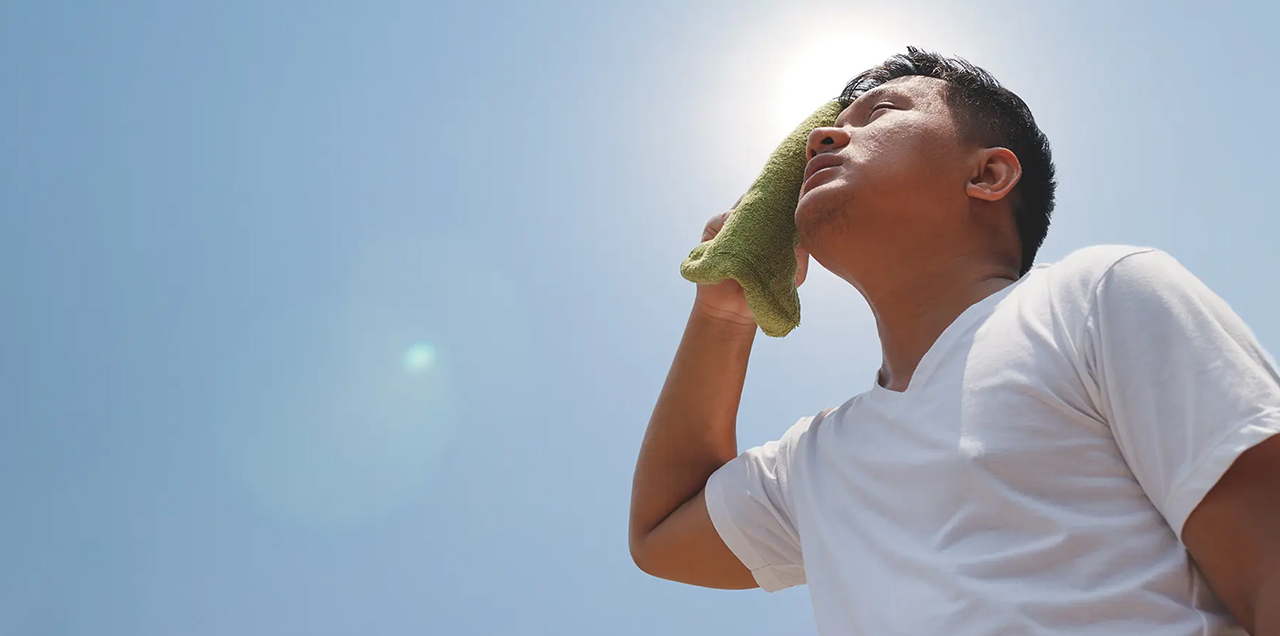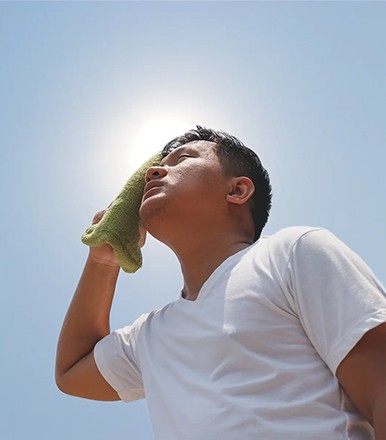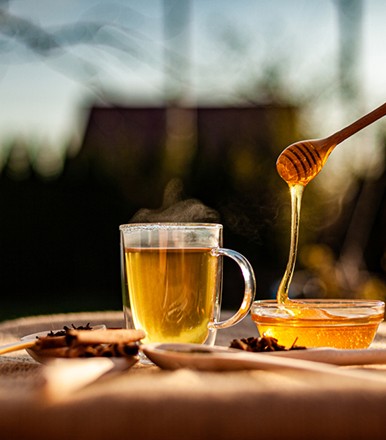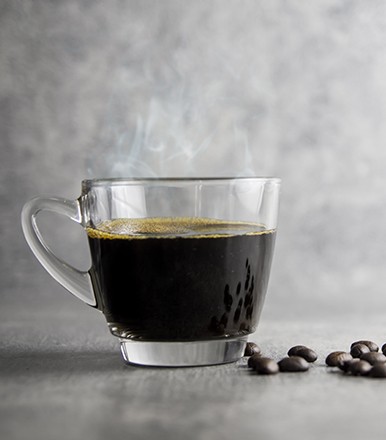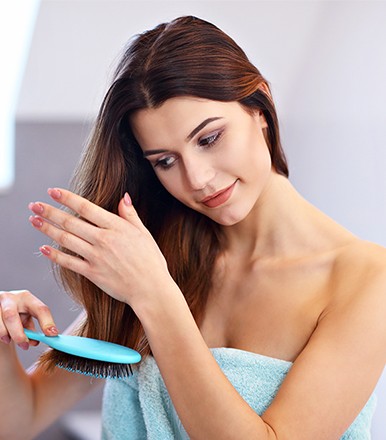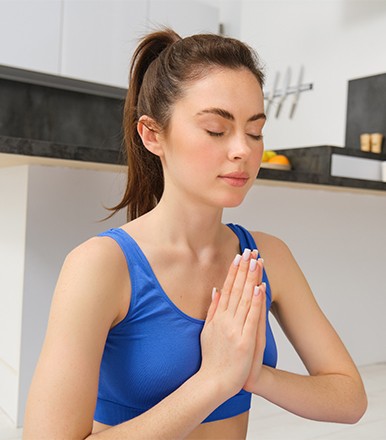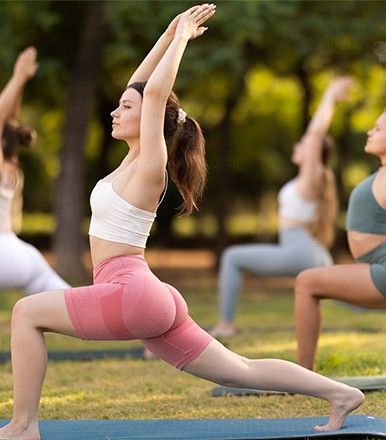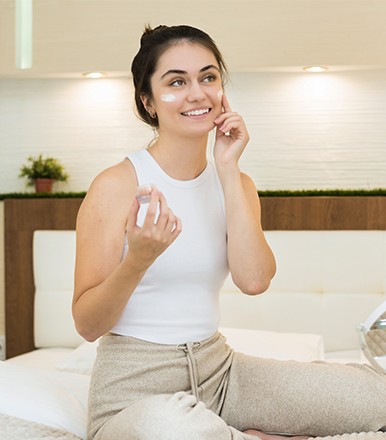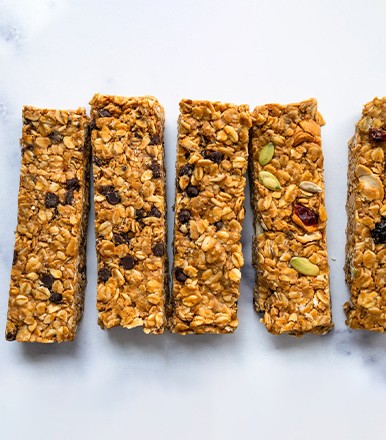The scorching summer sun isn't just uncomfortable—it can push your body's cooling systems to their limits. When temperatures soar, your internal thermostat works overtime to maintain that crucial 98.6°F balance. But sometimes, it needs a helping hand.
Knowing how to beat summer heat isn't just about comfort; it's about health and wellbeing. From ancient cooling techniques to modern science-backed approaches, this guide breaks down practical strategies to keep your cool when the mercury rises.
Hydrate More Than Usual
Your body's natural cooling system requires fuel—and that fuel is water!
Drink before you're thirsty – Thirst means you're already mildly dehydrated
Aim for 10-12 glasses daily (about 3 liters) during hot months
Hydration math: For every hour in the heat, drink an additional 8oz of water
Morning dehydration is real! Keep water by your bed
Electrolytes matter: Sweating depletes essential minerals
"Most summer heat-related health issues begin with dehydration. Simply increasing water intake prevents many emergency room visits." - Dr. Roberts, Heat Stress Specialist
Hydration boosters beyond plain water:
Coconut water provides natural electrolytes
Homemade electrolyte drinks beat sugary sports drinks
Watermelon delivers both hydration and cooling nutrients
Herbal iced teas (especially mint and hibiscus) hydrate while cooling
When exercising or spending extended time outdoors, your hydration needs increase dramatically. Carry water everywhere—it's your number one defense against overheating!
Eat Cooling Foods
Your diet can literally lower your body temperature!
Nature's cooling agents:
Watermelon: 92% water plus lycopene to protect skin from sun damage
Cucumber: Contains compounds that reduce internal heat
Mangoes: Packed with vitamins that support temperature regulation
Bananas: Potassium helps prevent heat cramps
Berries: High water content with bonus antioxidants
Leafy greens: Provide water, minerals, and require little digestive energy
Traditional medicine systems have long recognized certain foods as "cooling" to the body's constitution. Modern science confirms many of these foods contain compounds that reduce inflammation and support the body's cooling processes.
Pro tip: Start your day with cooling fruits rather than heavy breakfasts that generate digestive heat.
Simple cooling recipes:
Mint-cucumber raita: Yogurt with grated cucumber and fresh mint
Watermelon-feta salad: The perfect sweet-salty combination
Coconut water popsicles: Freeze coconut water with bits of fruit
Chilled avocado soup: No cooking required!
Avoid Heat-Producing Foods
Some foods make your body work harder and generate more internal heat.
Skip these heat-generators during hot weather:
Caffeine: Raises metabolism and body temperature
Spicy foods: Despite making you sweat, they actually increase core temperature
Heavy proteins: Require significant energy to digest
Alcohol: Causes dehydration and disrupts temperature regulation
Excessive salt: Leads to water retention and electrolyte imbalance
Processed sugars: Create rapid energy spikes that heat the body
The science behind food-generated heat: Digestion requires energy, and energy production creates heat. This "thermic effect of food" varies dramatically between food types. Proteins can increase metabolic rate by 20-30%, whereas fruits might only increase it by 5-10%.
Special caution: Hot weather is not the time for high-protein, low-carb diets, which can significantly increase your body's heat production.
Instead, focus on small, frequent meals rather than large ones. This reduces digestive burden and helps maintain stable energy without temperature spikes.
Wear Breathable Clothing
Your clothing choices can make a 10°F difference in how hot you feel!
Smart summer wardrobe essentials:
Cotton: Absorbs sweat and allows airflow
Linen: Nature's air conditioner—even cooler than cotton
Hemp: Sustainable and naturally antimicrobial
Bamboo: Wicks moisture and blocks UV rays
Light colors: Reflect rather than absorb heat
Loose fits: Allow air circulation around your body
Strategic dressing tips to beat the summer heat:
Cover your head with breathable hats when outdoors
Choose loose, flowy silhouettes over tight clothing
Opt for short sleeves or sleeveless options when appropriate
Consider UV-protective fabrics for extended outdoor time
Avoid synthetic materials that trap heat and moisture
Traditional hot-weather cultures have perfected heat-management clothing over centuries. From loose desert robes to Indian cotton kurtas, these time-tested designs prioritize airflow and sun protection simultaneously.
What to avoid: Polyester, nylon, and other synthetics might seem light but actually trap heat against your skin and prevent evaporative cooling.
Take Cold Showers or Use Damp Towels
Cooling your skin directly impacts your core temperature.
Quick cooling techniques:
Cold shower pulse points: Focus cool water on wrists, neck, and temples
Damp bandana: Tie around neck to cool blood flowing to the brain
Frozen water bottle: Roll under feet or press against pulse points
Cool misting: Keep a spray bottle in the refrigerator
Ice pack rotation: Apply to groin, armpits, and neck (major blood vessels)
Cooling towels: Specialized sports towels that stay cool for hours
The science is clear: cooling your pulse points where blood vessels run close to the skin can rapidly lower your core temperature. This works because blood cooled at these locations circulates throughout your entire body.
Emergency cooling technique: If someone shows signs of heat exhaustion, apply damp cloths to wrists, ankles, armpits, and groin while seeking medical help.
For everyday comfort, even brief exposure to cold water significantly impacts body temperature. A 30-second cold shower can provide cooling benefits lasting over an hour!
Limit Intense Workouts During Peak Hours
Time your exercise strategically to beat heat stress.
Smart summer workout timing:
Early morning glory: Exercise before 7am when temperatures are lowest
Evening advantage: Work out after 6pm when the sun's intensity diminishes
Indoor alternatives: Consider gym workouts during peak heat hours
Water workouts: Swimming provides exercise without overheating
Intensity adjustment: Reduce workout intensity by 20-30% in hot weather
Heat adds significant stress to your body during exercise. Your heart works harder, pumping blood both to muscles and to the skin for cooling. This dual demand can push your system to its limits.
Warning signs to stop immediately:
Dizziness or lightheadedness
Nausea or vomiting
Confusion or disorientation
Cessation of sweating
Muscle cramps
"If you must exercise in heat, extend your warm-up and cool-down periods, and reduce both intensity and duration. Your body is already working harder just to stay cool." - Hello Fitness Magazine Training Expert
Acclimatization matters: It takes about 10-14 days of regular heat exposure for your body to adapt its cooling mechanisms. Start slowly if you're not used to hot weather exercise.
Use Natural Coolants at Home
Transform your living space into a cool sanctuary.
Home cooling strategies:
Cross ventilation: Create airflow paths through strategic window opening
Ceiling fans: Use counterclockwise rotation in summer
Night cooling: Open windows when temperatures drop, close and cover during day
Heat-blocking curtains: Install light-colored, thermal curtains on sun-facing windows
Plant power: Indoor plants release moisture through transpiration
Electronics management: Unplug unused devices that generate heat
Natural cooling remedies:
Cooling essential oils: Peppermint, eucalyptus, and sandalwood
Aloe vera gel: Refrigerate and apply to pulse points
Rose water spray: Keep in refrigerator for refreshing face mists
Cooling foot soaks: Add mint leaves to cold water
Traditional cooling methods have stood the test of time. Many cultures use earthen pots (matkas) to naturally cool water. The porous clay allows slow evaporation, cooling the contents several degrees below ambient temperature.
Beat the heat with a DIY cooling solution: Place a shallow pan of ice in front of a fan to create a makeshift air conditioner that can drop room temperature by 3-5°F.
Get Adequate Rest
Quality sleep enables better temperature regulation.
Heat-smart sleep strategies:
Cotton sheets only: Synthetic bedding traps body heat
Optimal temperature: Set thermostats between 65-68°F (18-20°C) for ideal sleep
Cooling pillows: Look for gel-infused or naturally cooling materials
Pre-bed cooling routine: Take a cool shower before sleeping
Solo sleeping: Consider sleeping alone on extremely hot nights
Elevated extremities: Keep hands and feet outside the covers
Sleep quality dramatically affects your body's ability to regulate temperature the following day. Poor sleep impairs your hypothalamus—your brain's thermostat—making you more vulnerable to heat stress.
Natural sleep aids for hot nights:
Cooling herbal teas like chamomile and peppermint
Gentle fan white noise
Light, easily digestible evening meals
Limiting screen time (which generates both mental and physical heat)
"Quality sleep isn't a luxury during heat waves—it's a biological necessity. Your body needs that downtime to reset its cooling systems." - Sleep researcher
Emergency cooling hack: If air conditioning isn't available, dampen a sheet with cool water and use it as a covering—the evaporative effect creates significant cooling.
Conclusion:
Learning how to beat heat in summer isn't just about comfort—it's about supporting your body's incredible temperature regulation system. By combining these strategies, you can maintain your energy, productivity, and wellbeing even when temperatures soar.
Check out Hello Fitness Magazine. There is never a wrong time to go on a fitness quest. Contact us and allow us to assist you in leading a better lifestyle. Follow us on Instagram. We share the best Health & Fitness related Articles for information based on healthy eating, health and fitness recommendations, health problems and their solutions, human body fitness, and much more.




